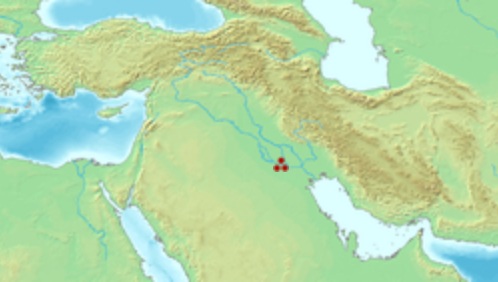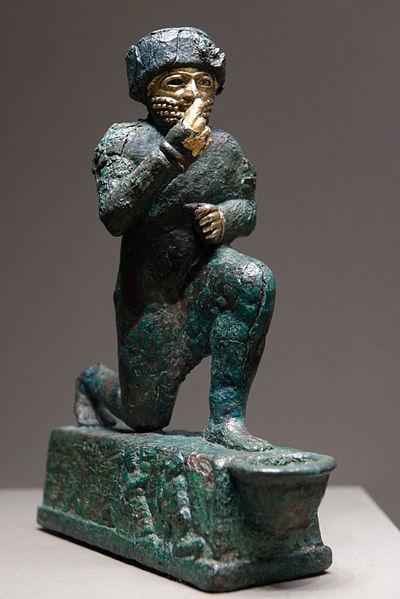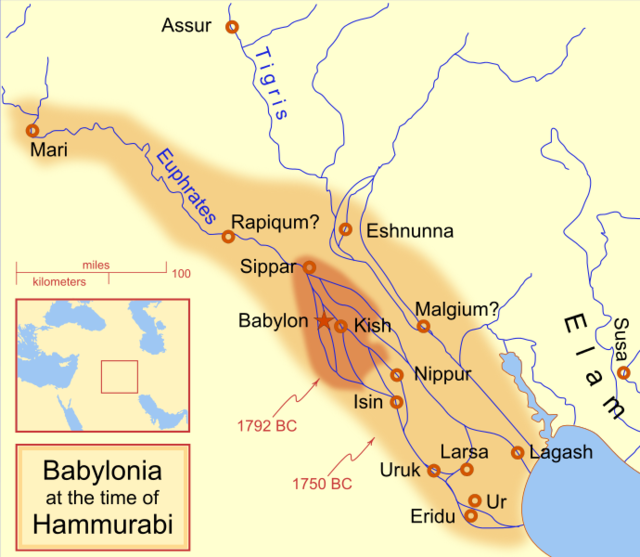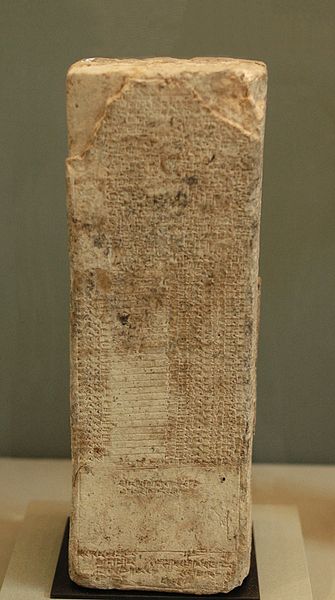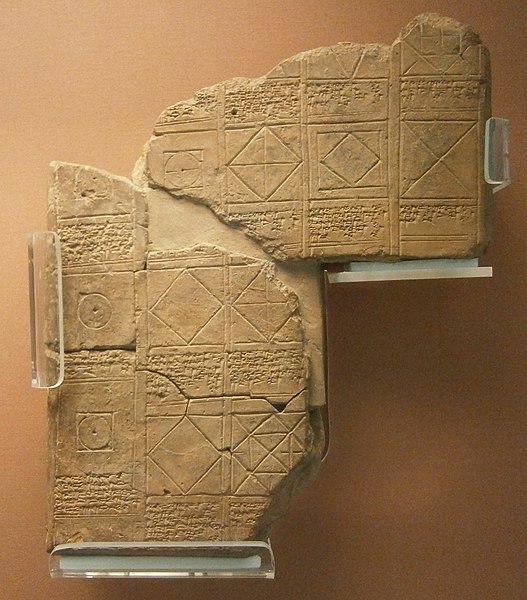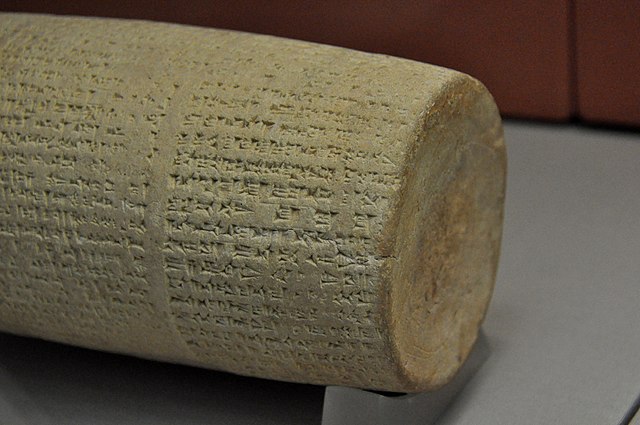
| LARSA
Larsa shown within Near East
The Worshipper of Larsa, a votive statuette dedicated to the god Amurru for Hammurabi's life, early 2nd millennium BC, Louvre Location : Ishan al-Bahriyat, Al-Qadisiyyah Governorate, Iraq
Region : Mesopotamia
Coordinates : 31°17'9 N 45°51'13 E
Type : Settlement
Larsa (Sumerian logogram: UD.UNUGKI, read Larsamki) was an important city state of ancient Sumer, the center of the cult of the sun god Utu. It lies some 25 km (16 mi) southeast of Uruk in Iraq's Dhi Qar Governorate, near the east bank of the Shatt-en-Nil canal at the site of the modern settlement Tell as-Senkereh or Sankarah.
History
:
The city became a political force during the Isin-Larsa period. After the Third Dynasty of Ur collapsed c. 2000 BC, Ishbi-Erra, an official of Ibbi-Sin, the last king of the Ur III Dynasty, relocated to Isin and set up a government which purported to be the successor to the Ur III dynasty. From there, Ishbi-Erra recaptured Ur as well as the cities of Uruk and Lagash, which Larsa was subject to. Subsequent Isin rulers appointed governors to rule over Larsa; one such governor was an Amorite named Gungunum. He eventually broke with Isin and established an independent dynasty in Larsa. To legitimize his rule and deliver a blow to Isin, Gungunum captured the city of Ur. As the region of Larsa was the main center of trade via the Persian Gulf, Isin lost an enormously profitable trade route, as well as a city with much cultic significance.
Gungunum's two successors, Abisare (c. 1841–1830 BC) and Sumuel (c. 1830–1801 BC), both took steps to cut Isin completely off from access to canals. Isin quickly lost political and economic force.
Larsa grew powerful, but never accumulated a large territory. At its peak under king Rim-Sin I (c. 1758–1699 BC), Larsa controlled only about 10-15 other city-states — nowhere near the territory controlled by other dynasties in Mesopotamian history. Nevertheless, huge building projects and agricultural undertakings can be detected archaeologically. After the defeat of Rim-Sin I by Hammurabi of Babylon, Larsa became a minor site, though it has been suggested that it was the home of the First Sealand Dynasty of Babylon.
Larsa is thought to be the source of a number of tablets involving Babylonian mathematics, including the Plimpton 322 tablet that contains patterns of Pythagorean triples.
Mesopotamia in the time of Hammurabi Kings of Larsa :
Archaeology :
The remains of Larsa cover an oval about 4.5 mi (7.2 km) in circumference. The highest point is around 70 ft (21 m) in height.
The site of Tell es-Senkereh, then known as Sinkara, was first excavated by William Loftus in 1850 for less than a month. In those early days of archaeology, the effort was more focused on obtaining museum specimens than scientific data and niceties like site drawings and findspots were not yet in common usage. Loftus recovered building bricks of Nebuchadnezzar II of the Neo-Babylonian Empire which enabled the site's identification as the ancient city of Larsa. Much of the effort by Loftus was on the temple of Shamash, rebuilt by Nebuchadnezzar II. Inscriptions of Burna-Buriash II of the Kassite dynasty of Babylon and Hammurabi of the First Babylonian dynasty were also found. Larsa was also briefly worked by Walter Andrae in 1903. The site was inspected by Edgar James Banks in 1905. He found that widespread looting by the local population was occurring there.
The first modern, scientific, excavation of Senkereh occurred in 1933, with the work of André Parrot. Parrot worked at the location again in 1967. In 1969 and 1970, Larsa was excavated by Jean-Claude Margueron. Between 1976 and 1991, an expedition of the Delegation Archaeologic Francaise en Irak led by J-L. Huot excavated at Tell es-Senereh for 13 seasons. In 2019 excavations were resumed.
List of the kings of Larsa, 39th year of Hammurabi's reign, Louvre
Compilation of plane geometry problems from Larsa, Old Babylonian period
Detail of a terracotta cylinder of Nabonidus, recording the restoration work on the temple of Shamash at Larsa. 555 - 539 BCE. Probably from Larsa, Iraq, housed in the British Museum
Source :
https://en.wikipedia.org/ |
